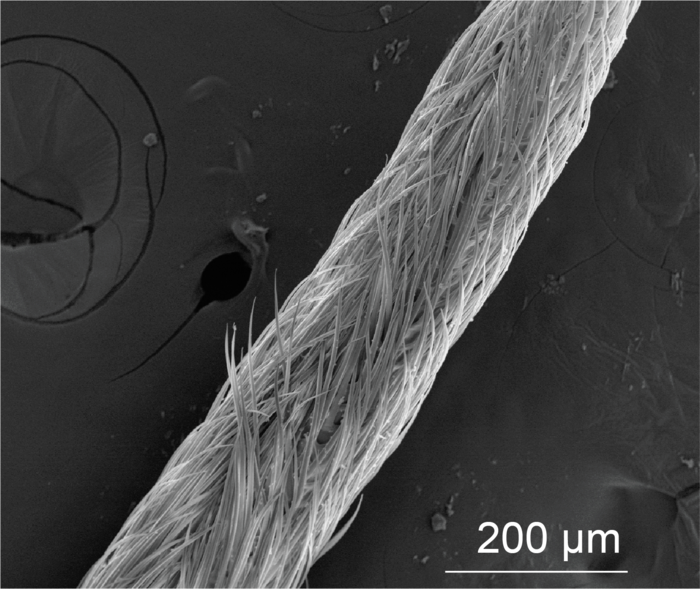A honeybee’s tongue, which is densely covered in hairs, is used to lap up nectar and other liquids. Scientists recently reported that those hairs are water repellent.
 Hairs that cover the surface of a bee’s tongue enhance its flexibility and durability during feeding. Image Credit: Jiangkun Wei.
Hairs that cover the surface of a bee’s tongue enhance its flexibility and durability during feeding. Image Credit: Jiangkun Wei.
Most liquid-capturing organs in nature are hydrophilic, or water-loving, and this finding is hence surprising. The hydrophobic nature of the hairs, on the other hand, makes the tongue more flexible, which is beneficial when foraging from sources of varying shapes. Researchers may be able to develop new materials based on this finding.
The study was published in the ACS Applied Materials & Interfaces journal.
A honeybee can feast on flower nectar, fruit juice, sap or salt water. That means that its tongue must be capable of interacting with a wide range of surfaces, including small flower openings, irregularly shaped rotten fruit, coarse tree bark and damp soil.
The surface properties and deformability of the insect’s tongue, which is made up of a series of ring-like segments with 16 to 20 hairs that capture food, determine its ability to exploit these disparate resources.
The structure and motion of the hairs had previously been studied, but their surface properties and relationship to overall flexibility had not received the same attention. Jiangkun Wei, Zhigang Wu, Jianing Wu and their coworkers set out to fill in the gaps.
In their study, the researchers used different types of microscopies, as well as high-speed videography and computational modeling. These techniques revealed that individual hairs are stiff and hydrophobic, in contrast to the soft and hydrophilic ring segments.
This difference keeps the hairs from sticking to and stiffening the tongue once it begins to bend, allowing it to bend further to reach food in crevices. The hairs’ stiffness increases their durability, allowing the bee to use its tongue millions of times over the course of its life.
The scientists anticipate that their findings could lead to the development of sophisticated new materials, such as flexible microstructured fiber systems for capturing and transporting viscous liquids.
The researchers acknowledge financial support from the National Natural Science Foundation of China, Sun Yat-sen University, Guangdong Province, and Shenzhen Science and Technology Program.
Journal Reference:
Wei, J., et al. (2022) Enhanced Flexibility of the Segmented Honey Bee Tongue with Hydrophobic Tongue Hairs. ACS Applied Materials & Interfaces. doi.org/10.1021/acsami.2c00431.